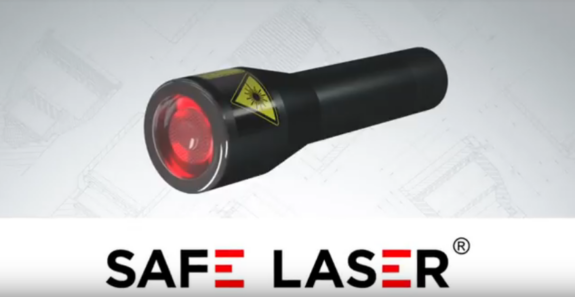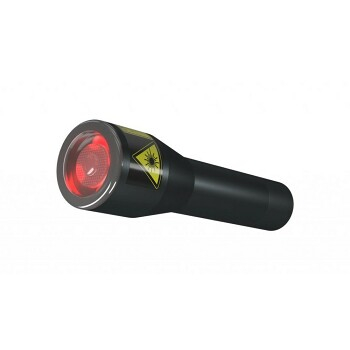Excellent Tips To Picking A Safe Laser Device
Wiki Article
What Is Low-Level Safe Laser Therapy (Lllt), Help Ulcerative Wounds?
Low-level laser therapy with safe lasers (LLLT) through its stimulation of tissue repair, aids in the healing of ulcerative lesions. LLLT accelerates tissue regeneration and repair by promoting cellular metabolism. It increases collagen synthesis, fibroblast activity and also angiogenesis (formation of new blood vessels) and all of these are important processes to heal wounds. It can help aid in the speedy healing of ulcerative injuries.
LLLT can reduce inflammation by inhibiting the release pro-inflammatory cytokines. It also promotes the production of antiinflammatory mediators. In the case of ulcerative wounds, where inflammation can delay healing and cause damage to the tissue, LLLT can help reduce inflammation and create a healthy environment for healing.
Pain Relief - LLLT reduces pain and inflammation in ulcerative lesions. These can be associated with discomfort or substantial pain.
Enhanced Blood Circulation - LLLT improves vasodilation and microcirculation that results in increased circulation of blood to the site of the wound. Improved blood circulatory ensures nutrition and oxygenation to the tissues. This assists in promoting healing, and removes toxic waste and waste products.
LLLT has antimicrobial properties, which reduces the risk of infections on ulcerative sores. LLLT is able to reduce wound infections by preventing further growth and promoting the elimination of bacteria.
LLLT minimizes the formation of scars through promoting the regrowth of tissue and the process of remodeling. LLLT, by stimulating the collagen fibers and encouraging the alignment collagen bundles can result in stronger, more well-organized scar tissue.
Overall low-level Laser Therapy with Secure Laser is an effective and non-invasive treatment for ulcerative wounds. It promotes faster wound healing, reduces discomfort, and improves overall outcomes of wounds. It is recommended to speak with your doctor for best treatment and care for wounds that are ulcerative prior to using LLLT. Follow the recommended safe laser bérlés for site advice including laser hu, mozgásszervi problémák, lágylézer kezelés árak, safe laser vélemények, lagy lezer, lágy lézer, lezeres kezeles, lágy lézer kezelés, lágylézer bérlés, laser kezelés and more.

What Are The Benefits Of Low-Level Laser Therapy That Is Safe (Lllt) For Ear Problems
Low-level laser therapy is used to treat a variety of ear conditions. LLLT helps reduce swelling and discomfort in certain conditions like otitis externa (inflammation to the outer ear).
LLLT can be effective in relieving discomfort, pain and earaches caused due to the earache or otitis.
LLLT can promote tissue healing by increasing the rate of tissue repair. In conditions such as Otitis media and eardrum perforations, LLLT can help promote faster recovery of injured tissues, reducing the risk of complications as well as improving overall health of the ear.
Improved Circulation LLLT improves vasodilation and microcirculation which can result in increased flow of blood through the ear tissues. The improved blood flow will transport nutrients and oxygen to injured and inflamed tissue, promoting healing and reduces inflammation.
Tinnitus Treatment LLLT was studied as a treatment option to treat the tinnitus. Tinnitus causes a ringing or buzzing sound in the ears. Although its precise mechanism isn't fully understood, LLLT could aid in improving blood flow and decrease inflammation in the auditory system, resulting to a reduction in the frequency of tinnitus.
LLLT decreases earwax and the buildup of cerumen, which makes it easier to get rid of. This can also reduce the risk of infections or blockages in the ear. This is particularly beneficial for people who have excessive earwax, or who suffer from earwax imposition.
Overall the Low-Level Laser Therapy with Safe Laser is an effective and non-invasive treatment for ear issues. It offers relief from symptoms like swelling, pain and earwax. It's best to consult an ENT specialist prior to applying LLLT for ear issues. It will guarantee you get the right diagnosis and treatment. Follow the recommended safe laser 500 for more recommendations including lágylézer készülék, gyógyító lézer készülékek, lágylézer készülékek, lágylézer vásárlás, mozgásszervi betegségek kezelése, lágylézer vásárlás, otthoni lézer kezelés, lágylézer árak, safe laser vélemények, safe laser használata and more.

How Long Will It Take For The Effects Of A Secure Laser To Treat Dental And Oral Conditions To Occur?
Safe Laser low-level laser therapy (LLLT), for dental and oral conditions, can be effective depending on many factors, such as the type of condition being treated, the severity of the condition as well as the patient's oral health and the response to treatment. In general, a sequence of LLLT sessions spread over a specific time frame is recommended to get the best results for oral and dental conditions.The amount of LLLT sessions needed for dental and oral conditions depends on several factors-
The Type and the Severity of Your Problem- The type of oral or dental issue that you're treating could affect the number of LLLT sessions you require. Depending on the condition, LLLT may be required in different ways.
Individual Response To Treatment- Personal factors, including the general condition of a person's mouth as well as their immune system and their capacity to heal may affect how they react to LLLT. Certain people may respond more quickly to treatment and experience faster improvement in symptoms, while others may require more long-term treatment.
Treatment Protocol - A dental professional's treatment protocol will decide the frequency and amount of LLLT sessions needed to address oral and dental problems. Healthcare professionals can customize treatment plans to meet the requirements of every patient, which includes scheduling LLLT sessions in intervals or multiple times per week.
Chronic as opposed to. Acute Conditions - The distinction between chronic and acute ailments will affect the quantity of LLLT treatments needed. Acute conditions, such as post-operative or oral ulcers might require shorter sessions to achieve relief. Chronic conditions like TMJ issues or periodontitis could require longer treatment.
Although some patients will experience improvements in their dental or oral problems after just a few LLLT treatments, others may require a longer course of treatment to get optimal results. To benefit the most from LLLT treatment, it's essential to follow the guidelines given by a dentist and to attend the scheduled sessions. In addition, it is important to monitor your oral health regularly and consult with a dentist professional to ensure that you are receiving the right treatment and making any necessary adjustments.